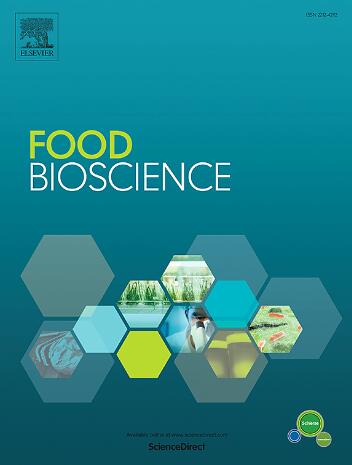Metaproteomic analysis of microbial diversity and activity in cassava fermentation for tucupi production
IF 4.8
1区 农林科学
Q1 FOOD SCIENCE & TECHNOLOGY
引用次数: 0
Abstract
Tucupi is a traditional fermented cassava byproduct widely consumed in the Amazon region, valued for its distinctive sensory properties and cultural significance. Despite its extensive use, little is known about the active microbiota involved in its fermentation, and the application of starter cultures remains an unexplored area. Understanding the microbial dynamics of this process is essential for improving product consistency, safety, and quality. To address this gap, this study investigated the microbial profile of fermented cassava wastewater (manipueira) during tucupi production using a shotgun metaproteomic approach. The fermentation process was analyzed over 24 h, focusing on identifying the active microbiota and its response to the addition of Pediococcus acidilactici as a starter culture. The results showed that fermentation was dominated by lactic acid bacteria such as Lactobacillus, Lactococcus, and Limosilactobacillus, alongside yeasts such as Yarrowia, Saccharomyces, and Schizosaccharomyces. The inclusion of P. acidilactici promoted more stable bacterial diversity and increased the expression of proteins associated with glycolysis. However, potential bacterial contaminants such as Clostridium, Staphylococcus, and Streptococcus were detected in both fermentation settings, emphasizing the need for appropriate management strategies to ensure food safety. These findings provide crucial insights into the active microbiota involved in tucupi fermentation, highlighting the role of lactic acid bacteria and the impact of the starter culture. Future studies should aim to isolate key microbial strains and evaluate their influence on the sensory attributes of tucupi, contributing to the development of controlled fermentation processes for this culturally significant product.
木薯发酵中微生物多样性及活性的元蛋白质组学分析
图库皮是一种传统的发酵木薯副产品,在亚马逊地区广泛消费,因其独特的感官特性和文化意义而受到重视。尽管它被广泛使用,但人们对其发酵过程中活跃的微生物群知之甚少,而发酵剂的应用仍然是一个未开发的领域。了解这一过程的微生物动力学对于提高产品的一致性、安全性和质量至关重要。为了解决这一空白,本研究使用散弹枪元蛋白质组学方法研究了发酵木薯废水(manipueira)在tucupi生产过程中的微生物特征。对发酵过程进行了24 h的分析,重点确定了活性微生物群及其对添加酸碱Pediococcus acilactici作为发酵剂的反应。结果表明,发酵主要由乳酸菌(Lactobacillus)、乳球菌(Lactococcus)和Limosilactobacillus)以及酵母(Yarrowia)、酵母菌(Saccharomyces)和裂糖菌(Schizosaccharomyces)主导。P. acidilactici的加入促进了更稳定的细菌多样性,并增加了糖酵解相关蛋白的表达。然而,在两种发酵环境中都检测到潜在的细菌污染物,如梭状芽孢杆菌、葡萄球菌和链球菌,强调需要适当的管理策略以确保食品安全。这些发现提供了对酵母菌发酵中活性微生物群的重要见解,突出了乳酸菌的作用和发酵剂的影响。未来的研究应旨在分离出关键的微生物菌株,并评估它们对吐豆皮感官属性的影响,从而为这种具有文化意义的产品的可控发酵工艺的发展做出贡献。
本文章由计算机程序翻译,如有差异,请以英文原文为准。
求助全文
约1分钟内获得全文
求助全文
来源期刊

Food Bioscience
Biochemistry, Genetics and Molecular Biology-Biochemistry
CiteScore
6.40
自引率
5.80%
发文量
671
审稿时长
27 days
期刊介绍:
Food Bioscience is a peer-reviewed journal that aims to provide a forum for recent developments in the field of bio-related food research. The journal focuses on both fundamental and applied research worldwide, with special attention to ethnic and cultural aspects of food bioresearch.
 求助内容:
求助内容: 应助结果提醒方式:
应助结果提醒方式:


